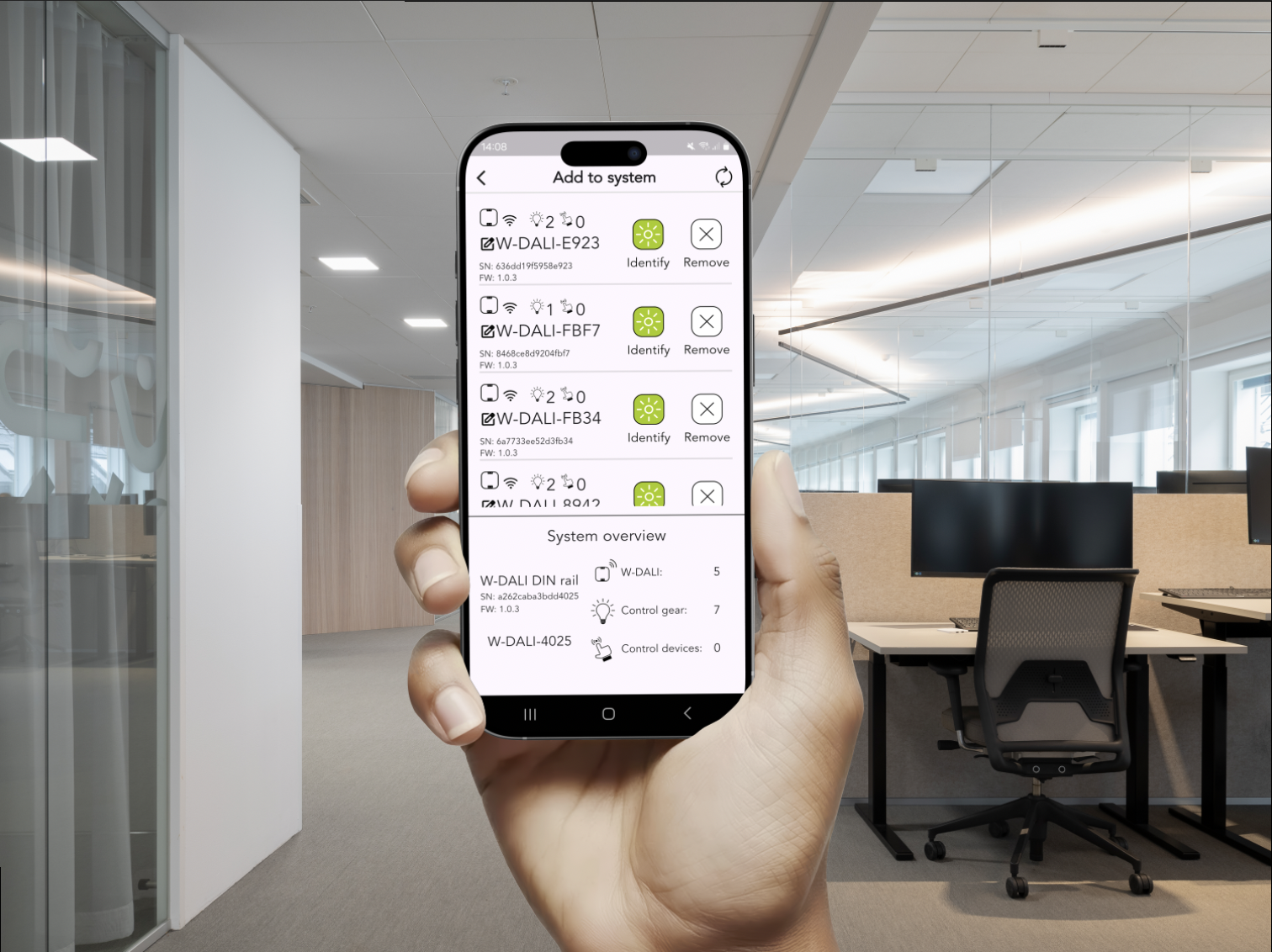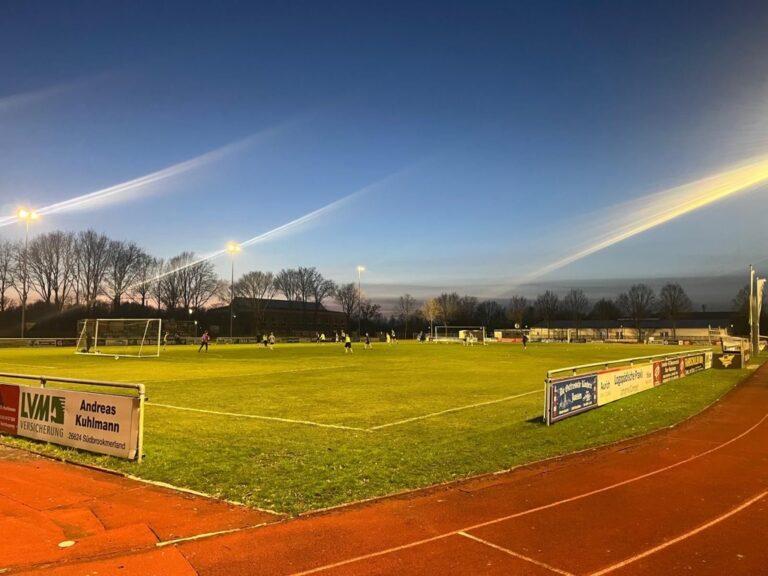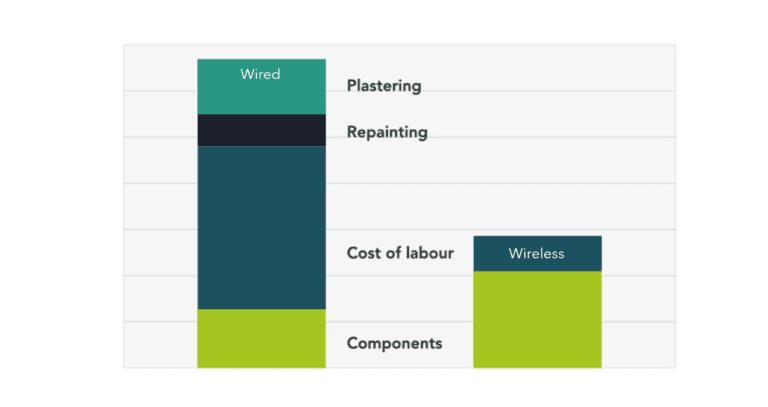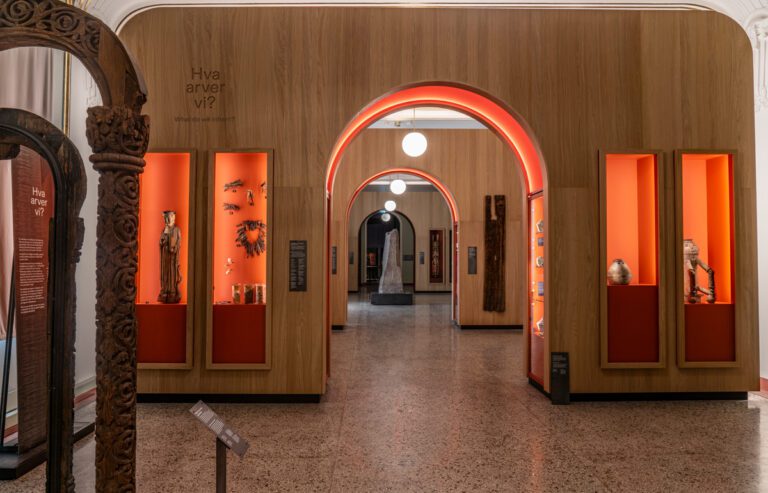W-DALI
SKU: W-DALI DIN Rail 810-4120, W-DALI Node 810-4130
W-DALI is the ideal wireless alternative to running DALI cables for retrofit or modernization projects.
With no need for extensive rewiring or construction work, W-DALI gives you an instant wireless lighting network. It cuts installation times, simplifies project planning and allows contractors to take on jobs in buildings where running new cables is just not possible. Being able to take on more projects taking less time means increased revenues and higher profit margins.
And as W-DALI is DALI in-DALI out, programming and commissioning is just the same – no need to learn a new system or change your DALI controller.
PRODUCT RANGE
W-DALI Node: receiver for groups of lighting fixtures. Fitted inside fixture or in junction box.
W-DALI DIN Rail: transmitter with receiver mode. Designed to be mounted in electrical cabinet beside existing DALI controller. When in receiver mode, the W-DALI DIN Rail gives you extra range compared to a W-DALI Node thanks to its external antenna.
Shorter installation times
Increased revenue and profit
Simpler project planning
- Range Calculator
- W-DALI Product sheet_English
- W-DALI product sheet_German
- W-DALI Product sheet_Swedish
- W-DALI Product sheet_Italian
- W-DALI Product sheet_French
- W-DALI Security Primer
- W-DALI Technical Datasheet
- W-DALI Instructions for Use
- W-DALI Quick Start Guide
- Wireless in Building Automation
- Wireless in Building Automation_German
What wireless technology is used by W-DALI?
W-DALI is using LumenRadio’s patented ultra-reliable long-range wireless mesh technology called MiraMesh (2.4GHz) to communicate between W-DALI devices. Check out our documentation for more information about MiraMesh. W-DALI is also using Bluetooth Low Energy (BLE) to be able to communicate with our app on mobile devices.
Is W-DALI secure?
Yes, W-DALI uses AES-128 encryption when communicating wirelessly.
What is the wireless range of W-DALI?
Up to 500 meters (line of sight) between two meshing W-DALI devices. The distance will be shorter when used indoors depending e.g. on the type of material used in a building for walls and ceilings, and also depending on where and how the W-DALI devices are mounted. The W-DALI mesh network supports up to 8 mesh hops.
How many W-DALI Nodes can be connected to one W-DALI DIN rail?
Up to 128 W-DALI Nodes can be connected to one W-DALI DIN rail.
How many DALI devices can be connected to one W-DALI Node?
Up to 10 DALI devices (control gear and control devices) can be connected to one W-DALI Node.
How many DALI devices can be connected in one W-DALI mesh network?
Up to 128 DALI devices (64 control gear and 64 control devices) can be connected in one W-DALI mesh network.
Can other DALI devices be connected on the same DALI bus as the W-DALI DIN rail?
Yes.
Where should I connect my DALI application controller for DALI commissioning?
The DALI application controller used for DALI commissioning should only be connected to the W-DALI DIN rail.
Can a W-DALI Node be used as an extender/repeater to increase the wireless range?
Yes, since W-DALI is meshing W-DALI Nodes can be used to increase the wireless range.
How do I create a W-DALI mesh network?
One W-DALI DIN rail and at least one W-DALI Node is required. The W-DALI mesh network can then in a few steps be created by adding W-DALI Nodes to the W-DALI DIN rail with or without our app. It is also possible to remove W-DALI Nodes if needed. Check out our documentation for more information on how to do these things.
What subnet should I use during and after installation?
The subnets (subnet 1 and subnet 2) on the W-DALI devices are only used to create a W-DALI mesh network without the help of our app. A W-DALI Node (not already in a mesh network) will join a DIN rail with the same subnet during the linking process. Check out our documentation for more information on how this is done. The subnet on the W-DALI Node can be in any position when our app is used. The subnet does not matter during normal operation.
How long time does it take for the W-DALI mesh network to form?
It can take a couple of minutes or longer depending on the distance and environment for the W-DALI mesh network to form and be fully operational.
How many W-DALI Nodes and DALI devices are part of my W-DALI mesh network?
Our app can be used to see how many W-DALI Nodes and DALI devices that are part of the W-DALI mesh network. Connect to the W-DALI DIN rail to see this information. Check out our documentation for more information on how to do this.
Is any extra hardware or software required to be able to see and use the DALI devices in the W-DALI mesh network?
No, simply use the DALI application controller(s) you already have or want to use.
What mobile devices with the latest version of our app are supported by W-DALI?
For firmware version 1.0.2 (released 2024-06-05) and newer, iOS and Android mobile devices with Bluetooth Low Energy (BLE) are supported.
For firmware versions 1.0.1 and 1.0.0, Android mobile devices with Bluetooth Low Energy 5 (BLE 5) including advertising extensions are supported.
How do I upgrade the firmware of my W-DALI devices?
The W-DALI firmware can be upgraded using our app by connecting to the W-DALI DIN rail. Check out our documentation for more information on how to do this. Once connected the firmware on the W-DALI DIN rail can be updated from the app. The W-DALI DIN rail will then distribute the firmware in the W-DALI mesh network to all connected W-DALI Nodes within two hours. The W-DALI DIN rail will always update the firmware on the connected W-DALI Nodes to the same version regardless of the app.
Is 24V required to install the W-DALI DIN rail?
No, W-DALI DIN rail is DALI bus powered. If 12-24VDC or 24VAC is connected the DALI bus current consumption will decrease significantly.
Is DALI version-1 and DALI-2 supported by W-DALI?
Yes. Proprietary DALI frames and non-standard DALI is however not supported. Check out our documentation for a full list of supported DALI devices.
Is W-DALI compatible with any other wireless product?
No. W-DALI uses its own unique protocol on top of MiraMesh and can’t be wirelessly connected to non W-DALI products. This ensures the performance and reliability of W-DALI.
- Out-of-the-box installation – just power up and connect to your W-DALI device and you are up and running.
- Instant wireless setup – with just one push of a button, the W-DALI network is set up within minutes.
- Mesh network – W-DALI is built on LumenRadio’s ultra-reliable long-range MiraMesh. Cover an entire building, utilizing the mesh network as your infrastructure.
- Range – up to 500 meters (line of sight) between two meshing W-DALI units.
- Reliability – LumenRadio’s patented frequency-friendly Cognitive Coexistence technology provides rock-solid connectivity and immunity to interference.
- Self-optimizing network – the mesh network will always find the best way to send messages through the network between devices.

Power
- Voltage range: 216-253VAC
- Max power consumption: <1W (with full DALI PSU load)
- Frequency: 50/60Hz
- Current consumption: <5mA
- Conductor cross section (stranded): 0.5-2.5mm2
- Conductor cross section (solid): 0.5-4mm2
DALI
- DALI PSU guaranteed current: 30mA
- DALI PSU max current: 40mA
- Max number of DALI units on bus: 10
- Max DALI bus current consumption: –
- DALI start up time: –
- Conductor cross section (stranded): 0.5-2.5mm2
- Conductor cross section (solid): 0.5-4mm2
Environment
- Ambient temperature range: -20 – +55 °C
- Storage temperature range: -30 – +80 °C
- Humidity (non-condensing): 10-95%
Mechanical
- Dimensions: 46x46x21mm
- Weight: 21g
- Protection level: IP20
Power
- Voltage range: 12-24VDC / 24VAC +/-10%
- Max power consumption: <1W
- Frequency: 50/60Hz
- Current consumption: <100mA
- Conductor cross section (stranded): 0.2-2.5mm2
- Conductor cross section (solid): 0.2-2.5mm2
DALI
- DALI PSU guaranteed current: –
- DALI PSU max current: –
- Max number of DALI units on bus: –
- Max DALI bus current consumption: 120mA
- DALI start up time: <5s
- Conductor cross section (stranded): 0.5-2.5mm2
- Conductor cross section (solid): 0.5-2.5mm2
Environment
- Ambient temperature range: -20 – +55 °C
- Storage temperature range: -30 – +80 °C
- Humidity (non-condensing): 10-95%
Mechanical
- Dimensions: 36x93x59mm (excluding antenna)
- Weight: 75g
- Protection level: IP20
Only qualified electricians may perform installations with this product. Always follow local electrical code and regulations.
Insulation classification: Basic insulation between DALI terminal and all other terminals. W-DALI Node and DIN Rail should be mounted in an enclosure, cabinet or similar for full protection against accidental contact with live parts.
If W-DALI DIN Rail is installed using an isolated AC or DC supply, this must be in accordance with IEC 61558-1 and applicable part 2 of IEC 61558.
Do not use the product if the product is damaged. Only use cables within the specified conductor sizes.
W-DALI node
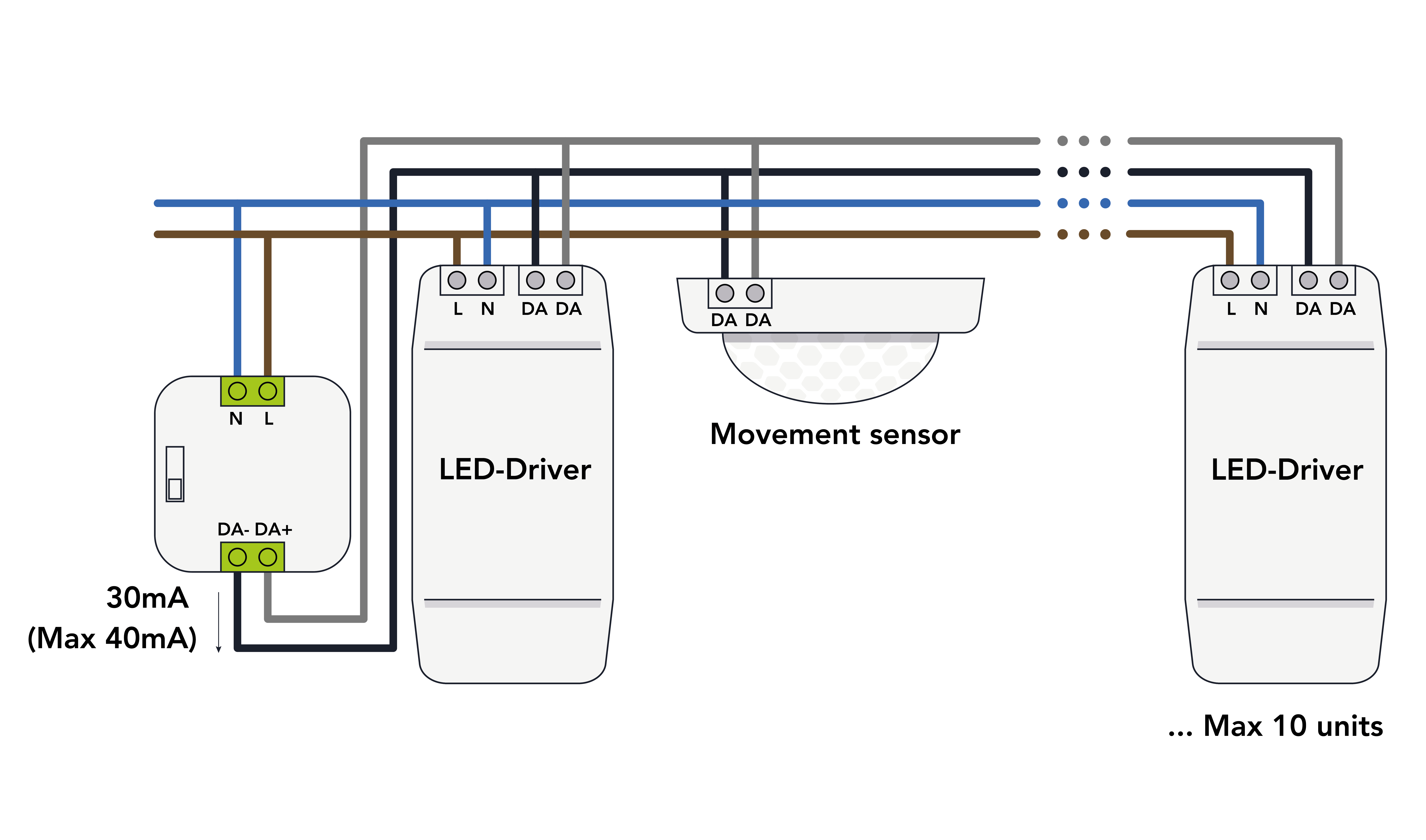
Bus powering of W-DALI DIN Rail
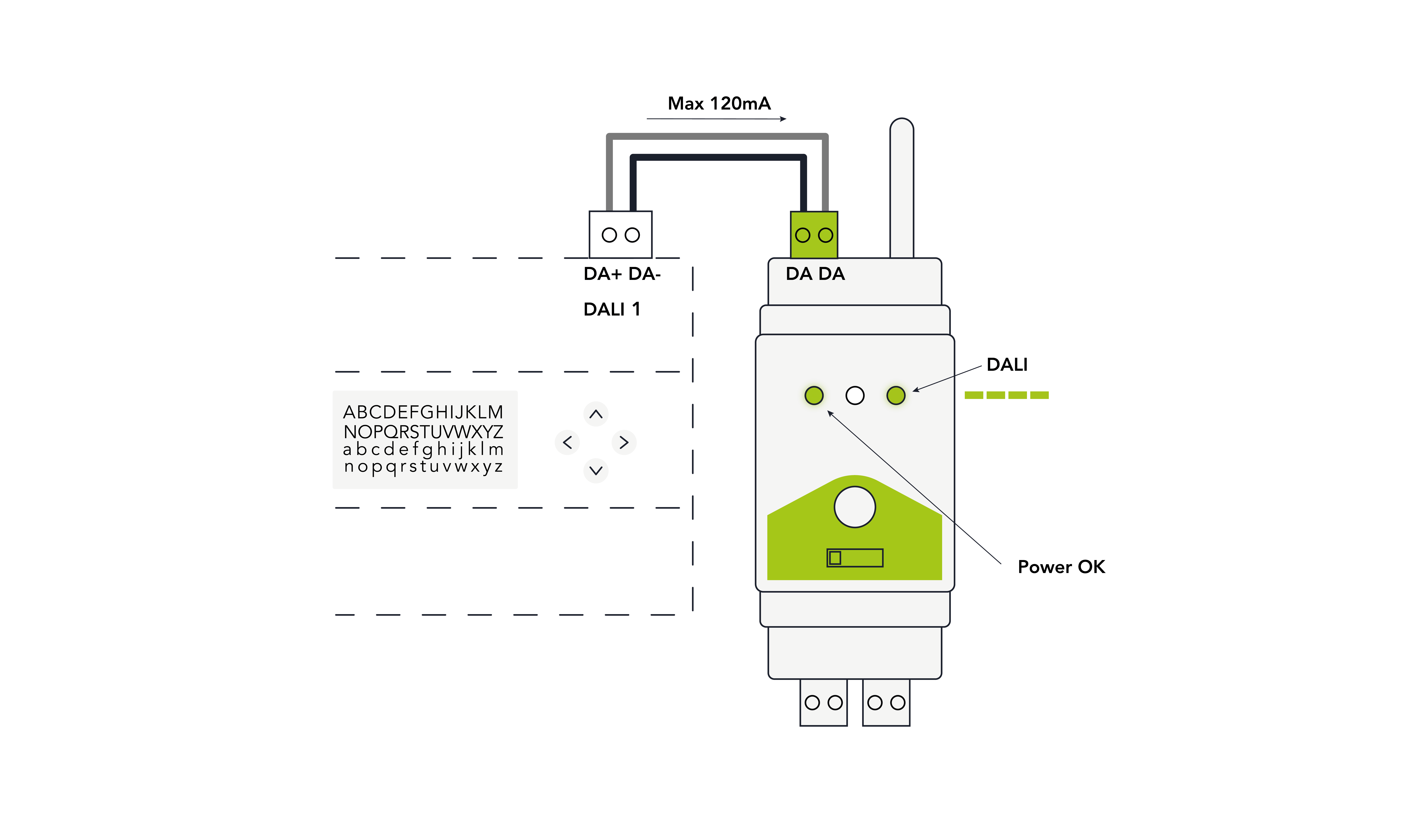
24V DC or AC of W-DALI DIN Rail
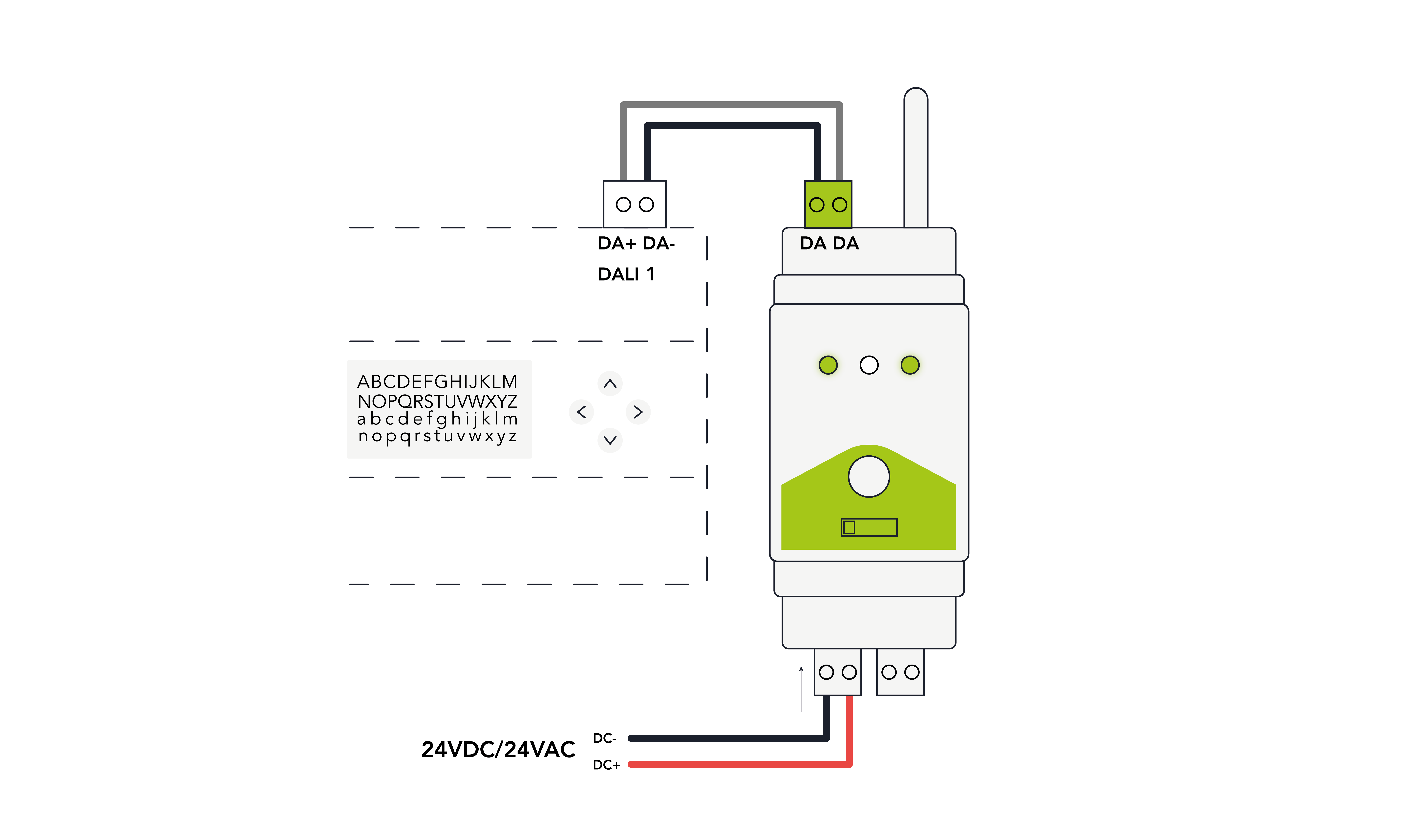
Multiple W-DALI DIN Rail
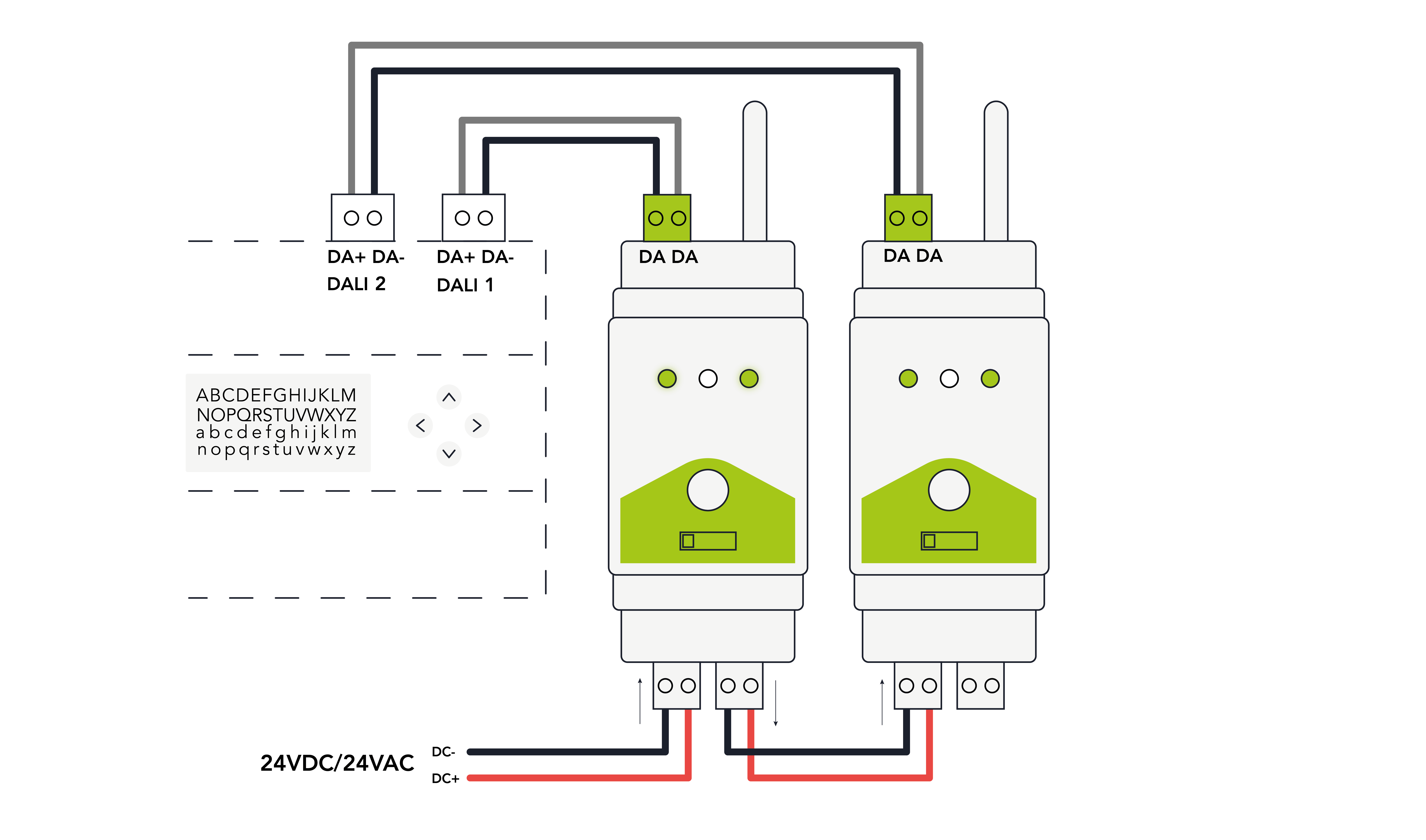
W-DALI DIN Rail and control gear/control devices
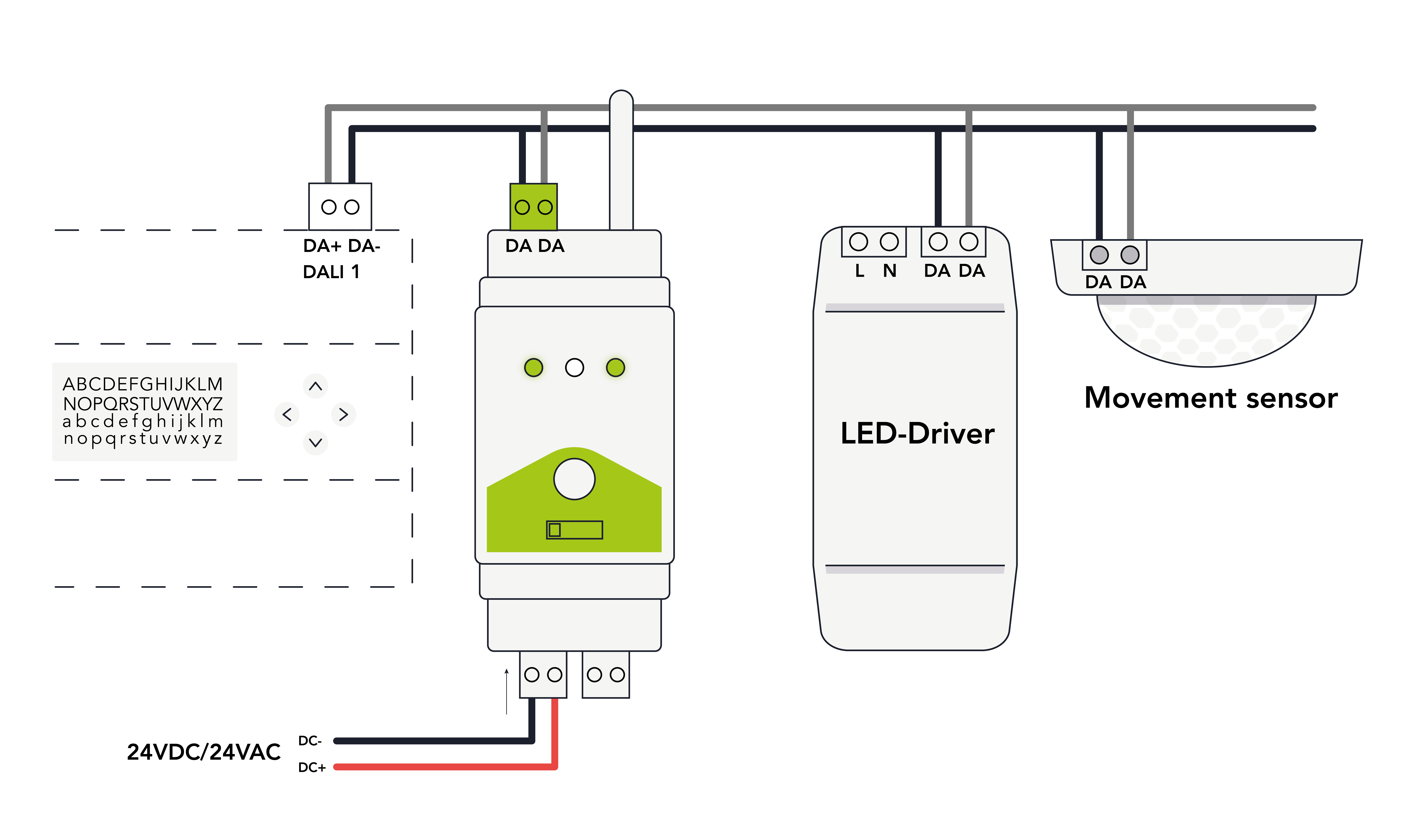
W-DALI is shipped with the following support:
Supported DALI parts IEC 62386:
- 101 General requirements – System components
- 16 and 24 bit frame formats supported
- Backward frames supported
- Proprietary forward frames or other frame formats not supported
- 102 General requirements – Control Gear
- 7 device types are supported per device
- Memory banks 0, 1
- 103 General requirements – Control devices
- Memory banks 0 and 1 are supported
- 202 Self-contained emergency lighting
- 205 Supply voltage controller for Incandescent lamps
- 207 LED modules (DT6)
- 208 Switching function
- 209 Colour control (DT8)
- 250 Integrated Bus Power Supply
- 251 Luminaire Data (Memory Bank 1 Extension)
- 252 Energy Data
- 253 Diagnostics & Maintenance Data
- 301 Push buttons
- 302 Absolute input devices
- 303 Occupancy sensors
- 304 Light sensors
W-DALI reads the following parts of the memory banks as defined in the standards:
- 201: 6 memory cells
- 202 to 204: 15 memory cells
- 205: 28 memory cells
- 206: 32 memory cells
- 207: 7 memory cells
- 208: 51 memory cells
Max 64 part 102 devices (including devices having the same short addresses).
Max 64 part 103 devices (including devices having the same short addresses).
RESET is blocked by default.
W-DALI uses the following open source projects:
- W-DALI contains code from ARM’s CMSIS | ARM CMSIS’ license
- W-DALI contains code from cJSON | cJSON’s license
- W-DALI is based on code from the Contiki Operating System | Contiki Operating System’s license
- W-DALI contains code from SEGGER | SEGGER’s license
- W-DALI contains the tinyprintf code | tinyprintf’s license
- W-DALI uses an open source implementation of Trickle | Trickle’s license
For firmware version 1.0.3
- Added DIN rail receiver mode.
- Support for DALI system failure (set light output to max level).
- Indicate DALI system failure and DALI errors on DIN rail.
- Bug fix for persistent encryption errors when using the app.
- Improved support for some DALI queries.
For firmware version 1.0.2
- Switched from BLE 5 advertising extension to BLE legacy to support more mobile devices.
- Indicate DALI framing errors on DIN rail.
- Improved support for DALI input devices.
- Support for DALI write memory bank operations.
- Bug fixes.
For firmware version 1.0.1
- Support for DALI part 202 (self-contained emergency lighting, device type 1).
- Support improved for DALI part 209 (colour control, device type 8).
- Disconnect Bluetooth on DIN rail button release if connected.
- The ability to do a Factory Reset has been added.
- Improved LED behaviour on DIN rail.
- DIN rail can indicate if the DALI bus is low during a long time.
- Improved light output behaviour during provisioning.
- DALI command RESET supported and blocked by default. The use of RESET will also start a new device discovery on the nodes.
- Bug fixes.
For app version 1.0.2
- Support for DIN rail in receiver mode.
- Update the number of connected devices on the DIN rail when connected.
- Grey out device information on the DIN rail when disconnected.
- The signal strength icon now indicates the signal strength of the W-DALI wireless network instead of Bluetooth.
For app version 1.0.1
- Compatible with W-DALI firmware version 1.0.2 (not exclusively).
- Show the firmware version of W-DALI nodes.
Go Wireless with W-DALI
Your practical guide to getting started with wireless control for DALI lighting
Related Stories
Read More
featured story





